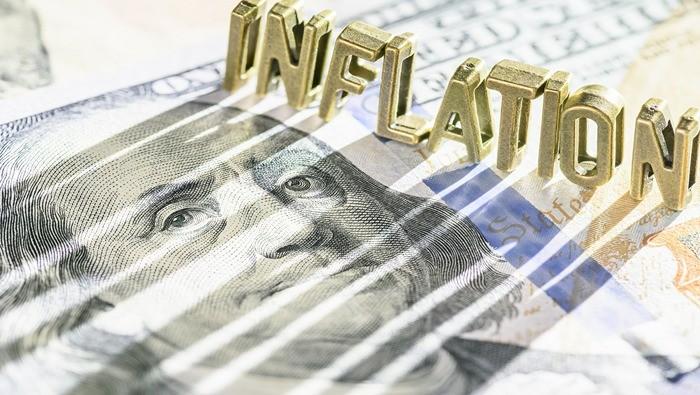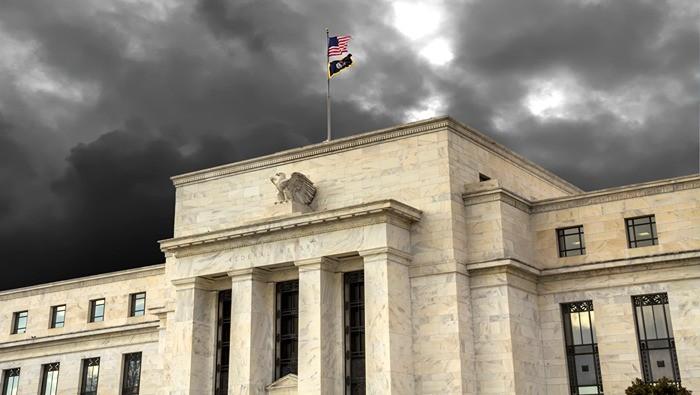2024-04-10 14:48
Euro (EUR/USD, EUR/GBP) Analysis US CPI forces markets to recalibrate rate cut expectations US CPI beat sends EUR/USD lower – next level of support at 1.0700 EUR/GBP trades within familiar range Get your hands on the EURO Q2 outlook today for exclusive insights into key market catalysts that should be on every trader's radar: US CPI Forces Markets to Recalibrate Rate Cut Expectations US CPI beat estimates across all major measures in March. Headline inflation rose from 3.2% to 3.5% with the month-on-month measure beating estimates to come in at 0.4%. Core inflation remained at 3.8% but beat estimates of 3.7%, also rising 0.4% on the month. Successive month-on-month rises in inflation makes it difficult for the Fed to point to seasonality in the data as the reason for the rise now that we’ve received three months’ worth of data already. The ECB is largely expected to use the platform of the April meeting to point towards the start of the rate cutting process in June. Notable ECB officials have already communicated this timeline and therefore tomorrow’s announcement carries the risk that it may not be a huge market mover. Market Implied Probabilities of rate cuts (shown in basis points, bps) Source: Refinitiv Instead, markets may look for subtle clues on future policy via questions fielded to Christine Lagarde in the press conference following the announcement. The June meeting will also come with updated staff projections which is likely to provide greater confidence to the governing council about the rate cut. Recent progress on inflation aligns with the notion of policy normalization and serves to motivate the committee to cut rates sooner than later. US CPI Beat Sends EUR/USD Lower - Next Level of Support at 1.0700 EUR/USD sank immediately after the hot CPI print as markets reigned in Fed cut odds, strengthening the dollar and weighing on EUR/USD. The euro has traded in a fairly robust manner despite recent drops in EU inflation – adding pressure on the ECB to cut rates. EUR/USD tests the 38.2% Fibonacci retracement of the 2023 decline at 1.0765, with a potential to head towards the psychological 1.0700 level. The bearish impulse follows the more medium-term move that began when the pair found resistance around 1.0950. EUR/USD Daily Chart Source: TradingView, prepared by Richard Snow EUR/USD is the leader amongst the top three most liquid FX pairs in the world, Find out why these pairs are so popular and how you should approach them: EUR/GBP Trades Within Familiar Range EUR/GBP pushed lower after attempting to break above the trading range (orange rectangle). FX volatility has been lacking in 2024, meaning breakout attempts have failed to receive the necessary follow through to make a move stick. However, recent inflation dynamics and nearing interest rate cuts may change that. Divergence is appearing in economic data between the US and Europe but also the UK. With the EU and the UK expecting similar paths of lower inflation, the two are likely to continue to oscillate without a clear directional move for now. Immediate support appears at 0.8560 followed by 0.8515. Resistance lies back at 0.8578 – the upper bound of the range. EUR/GBP Daily Chart Source: TradingView, prepared by Richard Snow https://www.dailyfx.com/news/euro-outlook-eur-usd-eur-gbp-price-setups-ahead-of-the-ecb-20240410.html

2024-04-10 12:59
US Dollar Analysis and Charts US headline inflation y/y rises to 3.5% in March from 3.2%. June rate cut priced out, July cut now just seen at 40%. For all major central bank meeting dates, see the DailyFX Central Bank Calendar US inflation turned higher in March with the annual headline figure now seen at 3.5%, above forecasts of 3.4% and February’s 3.2%. Monthly inflation rose by 0.4%. According to the US Bureau of Labor Statistics, ‘Over the last 12 months, the all items index increased 3.5 percent before seasonal adjustment. The index for shelter rose in March, as did the index for gasoline. Combined, these two indexes contributed over half of the monthly increase in the index for all items. The energy index rose 1.1 percent over the month. The food index rose 0.1 percent in March. The food at home index was unchanged, while the food away from home index rose 0.3 percent over the month.’ US rate cut expectations were pared back sharply after the inflation release. Going into the numbers, the June 12th meeting was shown as a 50/50 chance of a 25bp rate cut, this has now been downgraded to just 22%. The July meeting is now showing just a 40% chance of a rate cut. The US dollar index jumped by around 60 pips post-release… US Dollar Index Daily Chart …the yield on interest rate-sensitive UST 2-year soared by 18 basis points to a multi-month high of 4.93%... UST 2-Year Yield …while gold shed $10/oz. Gold Daily Price Chart Gold Rally Continues, US Inflation Data the Next Obstacle to Clear All Charts via TradingView What are your views on the US Dollar – bullish or bearish?? You can let us know via the form at the end of this piece or you can contact the author via Twitter @nickcawley1. https://www.dailyfx.com/news/us-inflation-jumps-rate-cut-expectations-pared-back-sharply-gold-slides-20240410.html

2024-04-10 11:30
Navigating Volatile Markets Financial market traders often embrace volatility because it presents opportunities for significant profits, albeit with higher risks. Volatility refers to the degree of variation in the price of a financial instrument over time. When markets are volatile, prices fluctuate rapidly, creating potential for traders to capitalize on short-term price movements. Here's a closer look at why traders like volatility and how they follow and trade it: Profit potential: Volatile markets may offer traders the chance to make profits in a short time. Rapid price swings allow traders to buy low and sell high within a compressed timeframe, amplifying potential returns. The larger the price movements, the greater the potential for traders who can accurately predict market direction. Increased trading opportunities: Volatility creates more trading opportunities as prices move more frequently and with greater magnitude. Traders can take advantage of these price swings by employing various strategies, such as scalping, day trading, or swing trading. More volatility means more chances to enter and exit positions, potentially increasing the number of profitable trades. Master the Three Most Important Market Conditions with our Complimentary Guides Enhanced liquidity: Volatile markets often attract more market participants, including traders and investors. Increased participation leads to higher volumes and improved liquidity. With more buyers and sellers in the market, traders can execute their trades more easily and with tighter spreads, reducing transaction costs. To follow and trade volatility, traders can use several tools and techniques: Volatility indicators: Traders employ technical indicators specifically designed to measure and track volatility. Popular indicators include the Average True Range (ATR), Bollinger Bands, and the Volatility Index (VIX). These indicators help traders gauge the level of volatility in the market and make informed trading decisions. What is the VIX? A Guide to the S&P 500 Volatility Index Using Average True Range (ATR) to Measure Volatility in Financial Markets Chart patterns: Traders analyze price charts to identify patterns that indicate potential volatility. Certain chart patterns, such as breakouts, trend lines, and support/resistance levels, can signal impending volatility. By recognizing these patterns, traders can prepare for potential price movements and adjust their strategies accordingly. Gold Chart with Simple Moving Averages, Support and Resistance Levels, and ATR Risk management: While volatility presents opportunities, it also carries increased risk. Traders must employ robust risk management techniques to navigate volatile markets effectively. This includes setting appropriate stop-loss orders, managing position sizes, and diversifying their trading portfolio. Proper risk management helps traders protect their capital during periods of heightened volatility. Risk Management Techniques for Trading Adaptive strategies: Successful traders adapt their strategies to changing market conditions. They may employ different trading approaches depending on the level of volatility. For example, during high volatility, traders might focus on shorter-term trades and use wider stop-loss levels. Conversely, during low volatility, they may pursue longer-term positions and employ tighter risk controls. In conclusion, by utilizing volatility indicators, analyzing chart patterns, monitoring economic events, and employing adaptive strategies, traders can navigate the challenges and opportunities presented by volatile markets. https://www.dailyfx.com/news/navigating-volatile-markets-strategies-and-tools-for-traders-20240410.html

2024-04-10 08:07
Gold Price Analysis and Chart Gold rally continues, fresh highs underpinned by geopolitical fears. US CPI may stall the precious metal’s rally in the short-term. Most Read: Understanding Inflation and its Global Impact The volatile situation in the Middle East remains unchanged as fears that the war of words between Israel and Iran escalates further. According to a range of news outlets, Iran’s Supreme Leader Ayatollah Ali Khamenei has vowed a strong response against Israel over the recent deaths of Iranian guard members in Syria. Israeli Foreign Minister Israel Katz responded on X (formerly Twitter) that ‘if Iran attacks Israel from its territory, we will attack Iran.’ With a further escalation seemingly likely, investors are looking at haven assets to hedge against future risks. While gold is currently benefitting from the geopolitical risk-off bid, US data will likely become the new, short-term, driver of price action. At 13:30 UK today the latest US inflation data hits the screens, followed later in the session by the minutes of the last FOMC meeting. US inflation remains uncomfortably high for the Federal Reserve with several members recently paring back interest rate cut expectations. According to market pricing, the probability of a rate cut at the June 12th FOMC meeting is now seen at a fraction over 50%, down from 61% one week ago. Headline US inflation is seen increasing to 3.4% from 3.2% on an annual basis and falling to 0.3% from 0.4% on a month-on-month basis. Any move higher in either headline or core readings will see rate cut expectations pared back further, and this will weigh on gold at its current elevated levels. While a short-term move lower is likely to occur on any higher-than-expected US inflation readings, the precious metal will remain supported by the current geopolitical backdrop. Initial support is likely around the $2,280/oz. level Gold Daily Price Chart – April 10th, 2024 Chart via TradingView Retail trader data shows 46.69% of traders are net-long with the ratio of traders short to long at 1.14 to 1.The number of traders net-long is 4.88% higher than yesterday and 13.88% higher from last week, while the number of traders net-short is 0.13% higher than yesterday and 0.76% higher from last week. We typically take a contrarian view to crowd sentiment, and the fact traders are net-short suggests Gold prices may continue to rise. What is your view on Gold – bullish or bearish?? You can let us know via the form at the end of this piece or contact the author via Twitter @nickcawley1. https://www.dailyfx.com/news/gold-rally-continues-us-inflation-data-the-next-obstacle-to-clear-20240410.html

2024-04-10 00:00
The U.S. Bureau of Labor Statistics will release March CPI data on Wednesday morning Another hot inflation report could shake the Fed’s monetary policy outlook, delaying rate cuts The U.S. dollar and stocks will be very sensitive to consumer price index results Most Read: Gold Price Outlook - Drivers Behind Market Boom, Reversal or New Record Ahead? With inflation in the U.S. economy struggling to downshift this year, all eyes will be on the U.S. Bureau of Labor Statistics' release of March CPI numbers on Wednesday. This report holds the potential to cause significant volatility across assets, so traders should prepare for the possibility of treacherous market conditions, especially if incoming data surprises to the upside. In terms of estimates, headline CPI is forecast to have increased by 0.3% monthly, lifting the yearly reading to 3.4% from 3.2% previously. The core gauge, which excludes food and energy, is also expected to rise by 0.3% on a seasonally adjusted basis, though the 12-month rate is projected to ease to 3.7% from 3.8% prior, a small but welcome step in the right direction. EVOLUTION OF US CPI Source: BLS UPCOMING US DATA While Fed interest rate expectations have shifted in a more hawkish direction over the past few weeks on the back of hotter-than-anticipated CPI and employment figures, investors still see a greater than 50% chance that policymakers will ease their stance at the June meeting. This, however, could change if price pressures reaccelerate, bringing the disinflation progress to a screeching halt. FOMC MEETING PROBABILITIES Source: CME Group Want to know where the U.S. dollar may be headed over the coming months? Explore all the insights available in our quarterly forecast. Request your complimentary guide today! POTENTIAL SCENARIOS The CPI report tops projections: Traders are likely to interpret this result as a sign that inflation is regaining momentum. This would dispel the notion that recent price spikes earlier in the year were temporary, reinforcing the likelihood of a longer battle to restore price stability. In response, the Fed could reassess its policy outlook, potentially delaying the start of its easing cycle. This scenario should be bullish for the U.S. dollar, but negative for risk assets such as equities. Inflation numbers come below expectations: Markets are likely to celebrate this outcome, especially if the downside surprise is significant. This scenario could prompt traders to bolster their bets on the Fed initiating rate cuts in June, with the potential for at least 75 basis points of easing this year, in line with the central bank's previous dot plot projections. A dovish repricing of interest rate expectations should weigh on Treasury yields, dragging down the U.S. dollar and boosting risk assets in the process. If you're looking for an in-depth analysis of U.S. equity indices, our Q2 stock market trading forecast is packed with great fundamental and technical insights. Request a free copy now! https://www.dailyfx.com/news/forex-us-inflation-preview-us-dollar-stocks-on-edge-how-to-trade-this-risk-event-20240410.html

2024-04-09 22:00
Most Read: The Federal Reserve Bank: A Forex Trader’s Guide The Federal Open Market Committee (FOMC) minutes, released a few weeks after each policy meeting, offer traders valuable insights into the U.S. central bank’s thinking. These minutes can have a significant impact on the U.S. dollar and gold prices. Here's a strategy guide on how to leverage these insights for potential trading opportunities: Understanding Key Signals Hawkish vs. Dovish: Pay close attention to the language used to describe the Fed's stance on inflation and economic growth. Hawkish language (concern about inflation, potential for further rate hikes) tends to strengthen the U.S. dollar. Dovish language (concern about slowing growth, potential for rate cuts) could weaken the dollar. Economic Outlook: Assess how the Fed views the overall health of the economy. A positive outlook suggests potential rate hikes, boosting the USD. A negative outlook hints at potential easing and might pressure the dollar. Policy Path: Look for clues about the trajectory of interest rates. Signals of further tightening strengthen the USD, while hints of easing or pausing rate hikes could weaken it. Trading USD FX Pairs Hawkish Signals: If the minutes reveal hawkish sentiment, consider buying the USD against currencies of countries with more dovish central banks (e.g., EUR/USD, GBP/USD, AUD/USD). Dovish Signals: If dovish language prevails, look for opportunities to sell the USD against other major currencies. Eager to gain insights into gold's future path? Discover the answers in our complimentary quarterly trading guide. Request a copy now! Trading Gold The Inverse Relationship: Gold and the U.S. dollar often have an inverse relationship. A hawkish Fed strengthens the USD, potentially pressuring gold prices. Dovish signals can lift gold if it weakens the USD. Real Interest Rates: Focus on how the minutes might affect real interest rates (interest rates adjusted for inflation). Higher real rates make the USD more attractive, potentially hurting gold. Lower real rates could benefit gold. Technical Analysis and Setup Confirmation: Don't trade based on the minutes alone. Use technical analysis to identify potential trend directions, support and resistance levels to confirm your trade ideas derived from the minutes. Risk Management: Minutes can cause volatility. Employ strict risk management strategies, including stop-loss orders. Important Considerations Timing Matters: The market's initial reaction to the minutes is often significant. However, these reactions may not always be sustained in the long term. Nuances: Pay attention to subtle shifts in language and dissenting opinions within the Fed, as they can offer clues about potential future policy changes. Market Context: Consider the broader market sentiment, and economic data releases happening in tandem with the minutes, as they also influence market reactions. Curious about the U.S. dollar’s near-term prospects? Explore all the insights available in our quarterly forecast. Request your complimentary guide today! https://www.dailyfx.com/news/fomc-minutes-strategies-to-trade-usd-fx-pairs-and-gold-20240409.html
